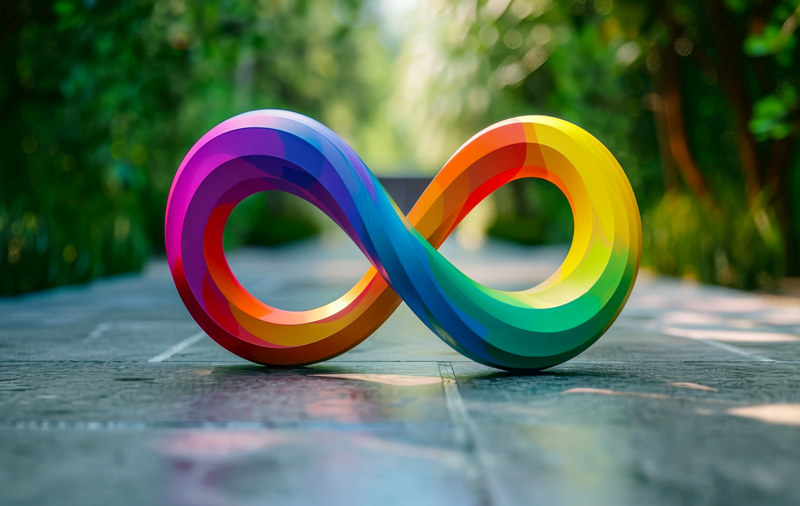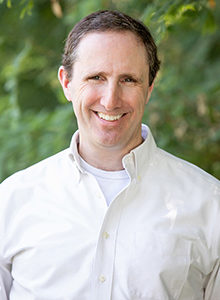I lived the first 40 years of my life as an autistic individual who didn’t know it yet. In a sense, lost because I lacked a complete picture of who I was. Confused because I faced too many questions as to why I was contending with challenges that were foreign to just about all of my peers, which I simply could not answer. Masking as a people pleaser because I thought doing so would address my fear of confrontational situations and help me “fit in” better than I otherwise would. Down on myself because I didn’t ask to be different but knew that I was.

The consequences of not knowing for that long were dire: compromised self-esteem, bullying, and hardships around dating, relationships, and making friends, to name a few. Initially, being identified as autistic didn’t help matters. Finding out caught me off guard in that I was unable to reconcile what I knew about the autistic individuals I had known with what I had just learned about myself.
When my autism was uncovered, what I needed most was a lifeline, and that’s precisely what I was granted during the years that would follow as I was working with various clinicians and researching what autism is and what living with it entails. Eventually, I was able to come to terms with, accept, and ultimately embrace it as being core to who I am, understanding that if I failed to accept this about myself, I would never feel whole and would, therefore, never find true happiness. That lifeline would not have surfaced had it not been for my learning about neurodiversity.
Neurodiversity is a paradigm which provides an alternative lens through which autism and other diagnoses are viewed, not as medical pathologies to be fixed or cured but instead as neurotypes (the way a person’s brain and nervous system are wired) which carry not only unique challenges but unique attributes, abilities, and talents as well. As such, the minority neurotypes under the neurodiversity umbrella (autism, AHDH, and learning disabilities, to name a few) are looked at as differences, not deficits.
Just as biodiversity is a term that encompasses all of life on Earth, neurodiversity embodies the neurological variety that has always existed within the human population. It speaks to all of us and in so doing, radiates inclusivity. What a word!
Neurodiversity provides a counter-narrative to the medical model of disability, aligning instead with the social model of disability. Put another way, societal expectations, primarily around socialization, communication, and behavior, become more disabling to us than our own intrinsic hardships. As a believer in neurodiversity, I reject the notion that I am broken and in need of repair. Rather, I feel burdened mostly by external influences, chief among these, ableism.
Neurodiversity is a global movement centered around social justice and human rights, which seeks to de-stigmatize neurodivergence and cultivate greater understanding, acceptance, and belonging. Those of us in this movement who are neurodivergent pursue these goals through the sharing of our lived experiences, by calling out damaging stereotypes about us and by fighting for greater neuro-inclusion in society, particularly at the workplace, in clinical settings, at educational institutions, and wherever else neurodivergent individuals face marginalization.
Above all else, in the neurodiversity paradigm, I found the lifeline I had been longing for, which enabled me to attain self-acceptance and ultimately learn how to love who I am. When autism is de-stigmatized, when the “disorder” label is dismissed, when we realize that we no longer bear sole responsibility for our own disabilities, and when we begin to view our neurotype as naturally occurring within the umbrella of neurodiversity, it becomes easier for autistic individuals to establish a strong sense of self no matter what challenges we face. In my experience, nothing matters more.
Change doesn’t just happen when somebody needs or asks for it to happen. It must be fought for and requires a prolonged, “all hands on deck” team effort in order to take hold and last. This is how the neurodiversity movement works to affect change at the societal level, working to flip the prevailing narrative around neurodivergence. And, this is how I fought for change deep inside myself as I figured out how to conquer my own internalized ableism and finally achieve self-love. Hard-fought and involving small steps forward over a long period of time. Neurodiversity helped me get there.
Neurodiversity, My Parents, and Psychological Safe Spaces
Long before Judy Singer coined the term, my parents were raising me in a neurodiversity-affirming fashion. They accepted me for who I was and never treated me as if I were disordered or broken and in need of repair. They were well aware of my sensitivities and vulnerabilities and took these into consideration while parenting me. They celebrated my accomplishments, supported me without judgment when I would fall short, set realistic expectations for me, and provided constructive criticism when they felt I could use it. In short, our home was a psychologically safe space within which I could be true to myself without adverse consequences. In retrospect, my then fragile sense of self benefitted greatly from their parenting style.
Whenever I come across stories in books and in social media posts about toxic environments that pathologize neurodivergence and, in so doing, become psychological danger zones, I am reminded of how blessed I have been with respect to the kinds of environments and people with whom I have had the privilege of associating over the course of my life. Perhaps an infusion of the neurodiversity paradigm could help transform such danger zones into the kinds of safe spaces in which I am most grateful to have found myself. This is why I advocate for neurodiversity, wanting to help others in my community who haven’t been as fortunate as I have been.
We Are Not All “A Little Autistic”
One of the more hurtful stereotypes against which the neurodiversity movement has been fighting for some time is the “but we are all a little autistic” stereotype. Not only does it undermine the fact that autism is a unique neurotype among the many that comprise humanity, but it also invalidates those of us who view our autism as an identity, a “way of being” which sets us apart.
We are not all “a little autistic.” Some people are autistic, and some are not. Full stop!
Instead, society should be affirming our shared humanity, in all of its diversity, and bound together by our commonalities. Autistic individuals, including me, contribute to this diversity by sensing, processing, and responding to the world around us, communicating, thinking, and learning in ways that distinguish us from the non-autistic majority. And yet, we are equally as human as all other human beings:
All of us have red blood flowing through our bodies.
All of us would prefer not to be stigmatized or marginalized.
All of us would rather not feel alone in the world.
All of us contend with challenge, hardship, and adversity.
All of us feel pain.
All of us want to be treated with kindness, decency, and respect.
All of us want to be accepted for who we are.
All of us want to love and be loved.
And all of us join together under the unifying umbrella of neurodiversity!
Sam Farmer is a neurodiversity community self-advocate, writer, author, and public speaker. Identified later in life as autistic, he shares stories of lived experiences as well as ideas and insights as to how one can achieve greater happiness and success in the face of challenge and adversity. A Long Walk Down a Winding Road – Small Steps, Challenges, & Triumphs Through an Autistic Lens is his first book. Visit samfarmerauthor.com to learn more.






